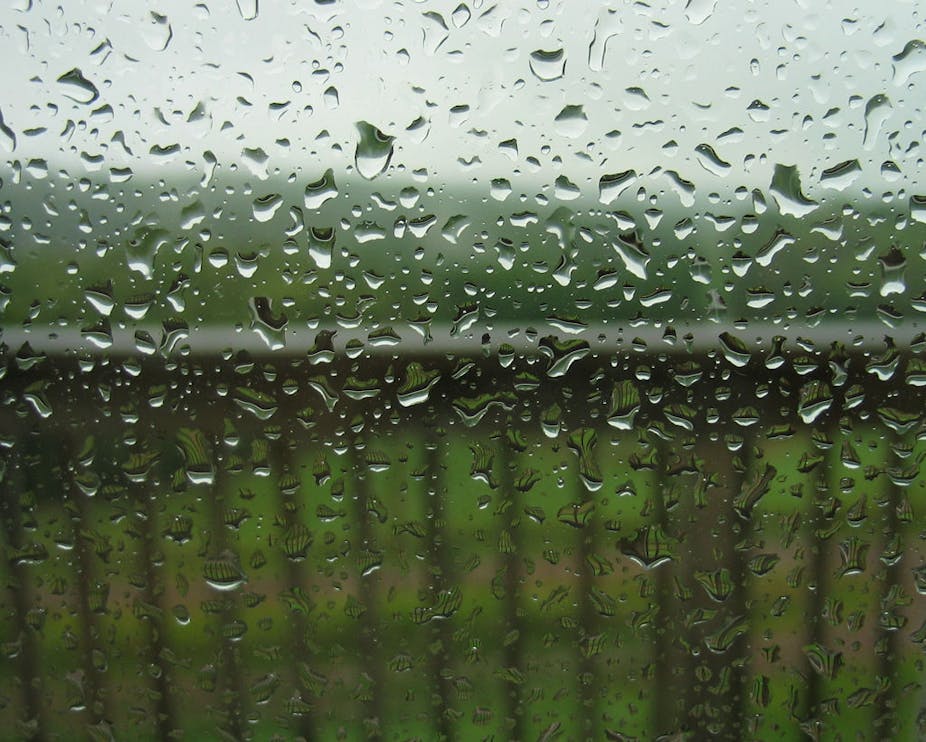Mental health problems cause profound suffering and are worthy of attention for that reason alone. But despite policy and service reform, such problems remain as common, expensive and disabling as they were a decade ago.
Bad mental health erodes financial and personal resources, and undermines resilience and adaptive capacity in affected families, workplaces and communities. So it’s vital to foresee threats that might compromise mental health.
Climate change is one such threat. Our world faces potentially catastrophic warming and we have limited capacity to adapt to rapid or extreme climatic changes. As the world’s most variable climate, our continent is the canary in the mine. We have a need and an obligation to invest in understanding and responding effectively to this threat.
Weather-related adversities are harmful for well-being – and for resilience – and they disproportionately affect locations which (and people who) already labour under multiple adversities. As a result, mental health is of particular concern in rural and remote Australia.
This is a major worry. But growing awareness of what climate change could mean might motivate Australians to cooperate to reduce carbon emissions and to get ready for change. Mitigation or adaptation activities, while useful in themselves, might also have important, unexpected benefits for mental health through increases in social capital and community connectedness, which is generated when people come together to solve problems.
Rural communities often do well at connectedness but are vulnerable to poor health due to socioeconomic disadvantage, reduced access to health services and a culture of stoicism that puts people off seeking help. Climate change can play into this dynamic. It may affect mental health by making weather-related disasters more intense and terrifying; it may also harm physical health and community well-being.
Damage to land and buildings can create economic pressures that force people off their farms or out of their businesses. When this happens, communities’ social infrastructure is at risk. It is this last link in the chain – a loss of social capital and connectedness – that hits mental health hardest.
More worrying still (and this is where rural and remote Australians are again particularly at risk), weather-related disasters discriminate. Vulnerable people and places are worst affected, especially those most reliant on the land. In Queensland’s “summer of sorrow”, poorer people and those living in rural and remote locations were more severely exposed to Cyclone Yasi and the floods, and they suffered greater trauma and distress than other Queenslanders.

To respond effectively to this challenge, it makes sense to pay special attention to people and industries over-represented in rural and remote Australia, especially Aboriginal people, farmers, miners and tourism operators. The evidence base for these groups is small-to-non-existent but there has been some systematic consideration of the first two.
Stigma, lack of appropriate services and the expense of delivering services in remote settings make it impossible to adequately address Aboriginal people’s mental health needs solely through a mainstream medical approach. And, mainstream approaches fail to accommodate the relationship between Aboriginal well-being and connectedness to land.
Thinking about drought, for example, New South Wales Aboriginal communities described climate change as presenting unique adversity that compounds existing marginalisation. At the same time, drought prompted increased love of and concern for land and a renewed enthusiasm for expressing connectedness to it.
Separately, there are clear and credible signs that farmers’ health and well-being may be compromised by climate change-related adversity. Drought, economic hardship and out-migration has left an ageing farm population, altered the social structure of many rural communities and damaged personal and community morale. These pressures exacerbate the substantial stresses and uncertainties inherent in farming. Farmers’ poor sense of future is of considerable concern because of its possible links to hopelessness and suicide.
The social, economic, environmental and health care costs of climate change-related adversity are potentially unmanageable in the long term. Research will need to consider these factors systemically if it is to contribute to solutions that will work in the real world.
So what should Australia’s priorities be for weather-disaster related mental health research in rural and remote Australia? Neither individuals nor governments alone can solve these problems – a local level of action and intervention is necessary.
Galvanising and sustaining effective community action is difficult. It will require support from different levels of government and scientific evaluation to understand what works and how. If successful, however, such investment could return dividends for people and places – and a sustainable future for rural and remote Australia.

